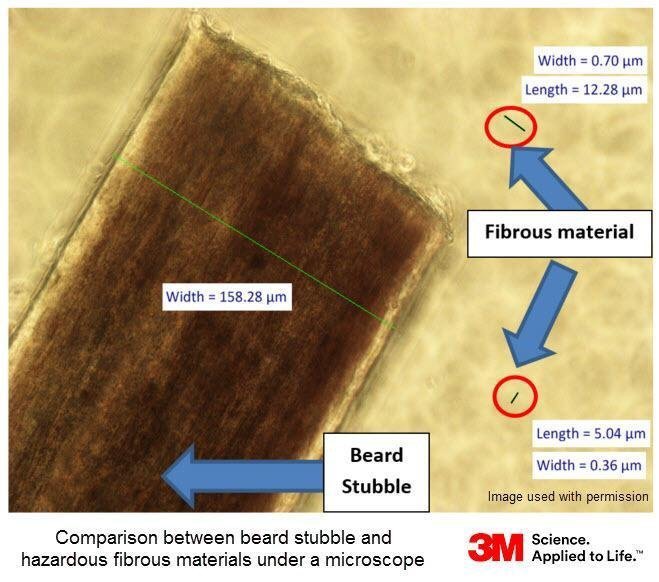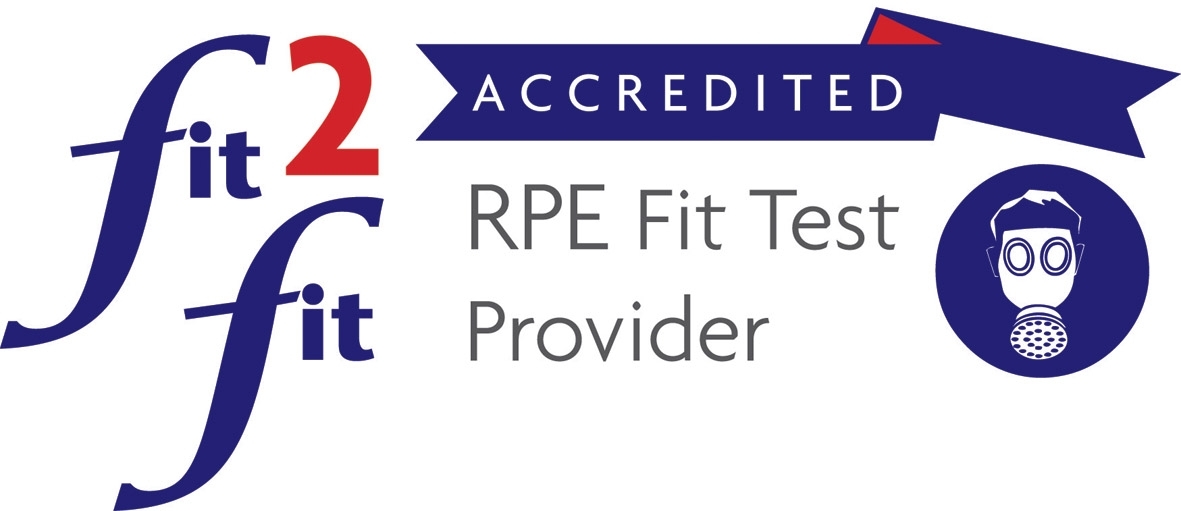Qualitative & Quantitative face fit testing conducted by fit2fit accredited testers across Glasgow, Edinburgh, Dundee, Aberdeen, Inverness, Offshore & UK wide.
Face Fit Safety Ltd have a flexible approach to conducting face fit testing. Whether you need a few tests completed, or a full workforce tested - we can cover your requirement. All Face Fit Testing conducted by fully fit2fit accredited and experienced face fit testers.
In the UK there are 13,000 deaths each year linked to past exposure at work to respiratory hazards. This is primarily exposure to chemicals or dust. There is a lack of understanding to prevent occupational lung disease because the effects are often long latency. In other words the effects are not often seen until many years after the initial exposure.
The HSE are understandably focussed in reducing these unacceptable numbers. Employers must ensure they are managing their respiratory hazards and have conducted face fit testing if using tight-fitting respirators.
During the Covid19 pandemic tight-fitting respirators and face fit testing has been critical in healthcare. This is to ensure healthcare workers are not at risk of inhaling viruses during high risk aerosol generating procedures.
Anyone who wears a tight-fitting respirator will require face fit testing. This includes disposable masks (filtering face pieces, known as FFPs), reusable half masks & full face masks. Please note that full face masks used with self contained breathing apparatus sets also need tested.
Anyone already using a tight-fitting respirator must be face fit tested as soon as possible. This is to ensure the respirator is adequately protecting the individual wearer. If you are considering issuing tight fitting respirators, then face fit testing must be part of the selection process. If you decide to change the make/model of the respirator, face fit testing is required for the new model.
We all have different face shapes, jaw structures, nose bridges, we are all unique. Tight fitting respirators require a seal to be obtained against the wearer’s face to ensure they protect the individual. An Ill-fitting respirator does not protect and even the smallest of gaps can result in massive inward leakage. Ill fitting respirators put the wearer at risk of breathing in the substance they believe they are protected from.
“Recent research has shown that around 50% of RPE used does not offer the wearer the level of protection assumed. The major reason for this is that is simply does not fit”
Face fit testing is the process of ensuring that any tight-fitting respirator actually fits the individual wearer’s face contours. Ill fitting respirators do not protect. Even the smallest of leaks can rsult in massive leakage and exposure to airborne contaminents.
There are 2 methods of conducting face fit testing:
1) qualitative (also referred to as a taste test)
2) quantitative (which requires specialist equipment such as a portacount particle counting machine).
Qualitative (QLFT) is an acceptable method for testing disposables and half masks. Please note that it can not be used to test full face masks.
It is a subjective test which relies on the individual to be able to taste a solution (often a bitter solution). A sensitivity test is carried out to ensure the wearer can taste the solution and at what concentration. The face fit test is then carried out with the wearer wearing their mask. A hood is placed over their head and the solution is squeezed in to the hood using a nebuliser. This is topped up at regular intervals to maintain the atmosphere within the hood area. A series of 7 exercises are conducted to replicate different head movements and breathing rates to replicate typical work activity.
If the wearer tastes the solution at any point then the mask is deemed not to fit. A break seal test is performed at the end to confirm to the wearer that the mask fits and validates the test.
This is a non-subjective highly accurate method of determining how well a respirator fits.
The most popular method of conducting quantitave testing is the ambient particle counting (APC) method.
This method involves counting particles in the ambient air and comparing to particles the wearer is breathing in. The wearer still conducts 7 exercises to replicate different head movements and breathing rates to ensure the mask fits throughout. The comparison of particles in the ambient air to particles within the breathing zone of the respirator mask when worn tells us exactly how well the mask is fitting.
It does not rely on the wearers ability to taste a solution. Quantitative can be conducted on all mask types, including full face masks.
At the end of the test a printed report is produced for audit and record keeping.
It is stipulated in HSE Guidance documents HSG53 & INDG479 that face fit testing must be conducted by a competent person.
Because of the focus on face fit testing there is a lot of companies and individuals offering face fit testing. They are not all competent and there is a concern of face fit testing being conducted incorrectly. This is a serious concern as anyone falsely passing a face fit test is still at risk of lung disease. Worse still, they will incorrectly think they are protected. For this reason, the British Safety Industry Federation, supported by the HSE, launched the fit2fit accreditation scheme. The scheme is intended to ensure the competency of face fit testers. By choosing a fit2fit accredited face fit tester you are guaranteed that the face fit testing is being conducted to the correct protocols by a competent person. We also have in depth knowledge and experience of respiratory and when fails are experienced we can confidently explain your options and offer solutions.
Repeat testing needs to be conducted on a regular basis to capture facial changes which may affect the fit and performance of a respirator.
If anyone has any significant weight gain or loss, has substantial dental work, has a facial piercing or has a mole or scar appear where the mask makes contact with their skin – they should request a repeat face fit test to ensure their mask still fits.
The British Safety Industry Federation recommend face fit testing is repeated within 2 years (or earlier if RPE is the sole or primary means of control).
Please note that your face fit test is specific to a mask model and size, if you were to switch to a different mask model then this would immediately require a face fit test which should be part of the mask selection process.
A user fit check is performed by the respirator user every time they fit their respirator to check they have fitted it correctly and that there is no obvious gaps in the seal.
A face fit test is conducted by a face fit tester to check if a respirator actually fits the wearer, obtains an adequate seal and protects the wearer as intended.
A face fit test is required as part of the respirator selection process. Any respirator which fails a face fit test must not be used as it will not provide the correct level of protection. A face fit test will need to be repeated if the respirator is changed to a different make or model, if any head mounted ppe or eyewear is introduced or changed which may interfere with the seal, or if there is any changes to the employee which may impact the ability to get a fit/seal with the mask (such as significant weight gain or loss).
Anyone requiring tight fitting RPE needs to be face fit tested prior to the respirator being used,

Facial Hair
All wearers of tight fitting mask types must be clean shaven around the face seal area when they are face fit tested. Tight fitting respirator users must also be clean shaven each and every time they wear a respirator.
Facial hair can cause leakage and the respirator will not protect the wearer as intended.
Is Face Fit Testing New ?
The requirement for face fit testing tight fitting respirators is not new. As can seen been in the video, the understanding of face shapes and sizes and respirators requiring an adequate seal to be effective was fully understood in the 1930s. It has been a legal requirement to conduct face fit testing when using tight fitting respirator types in the UK for over 20 years now.
fit2fit is an accreditation scheme operated by the British Safety Industry Federation (BSIF), supported by the HSE to improve and demonstrate the competency of face fit testers. Whilst the scheme is not mandatory, it was created as there was a recognised problem in the growing number of poor quality, sub standard face fit testing and training in existance.

